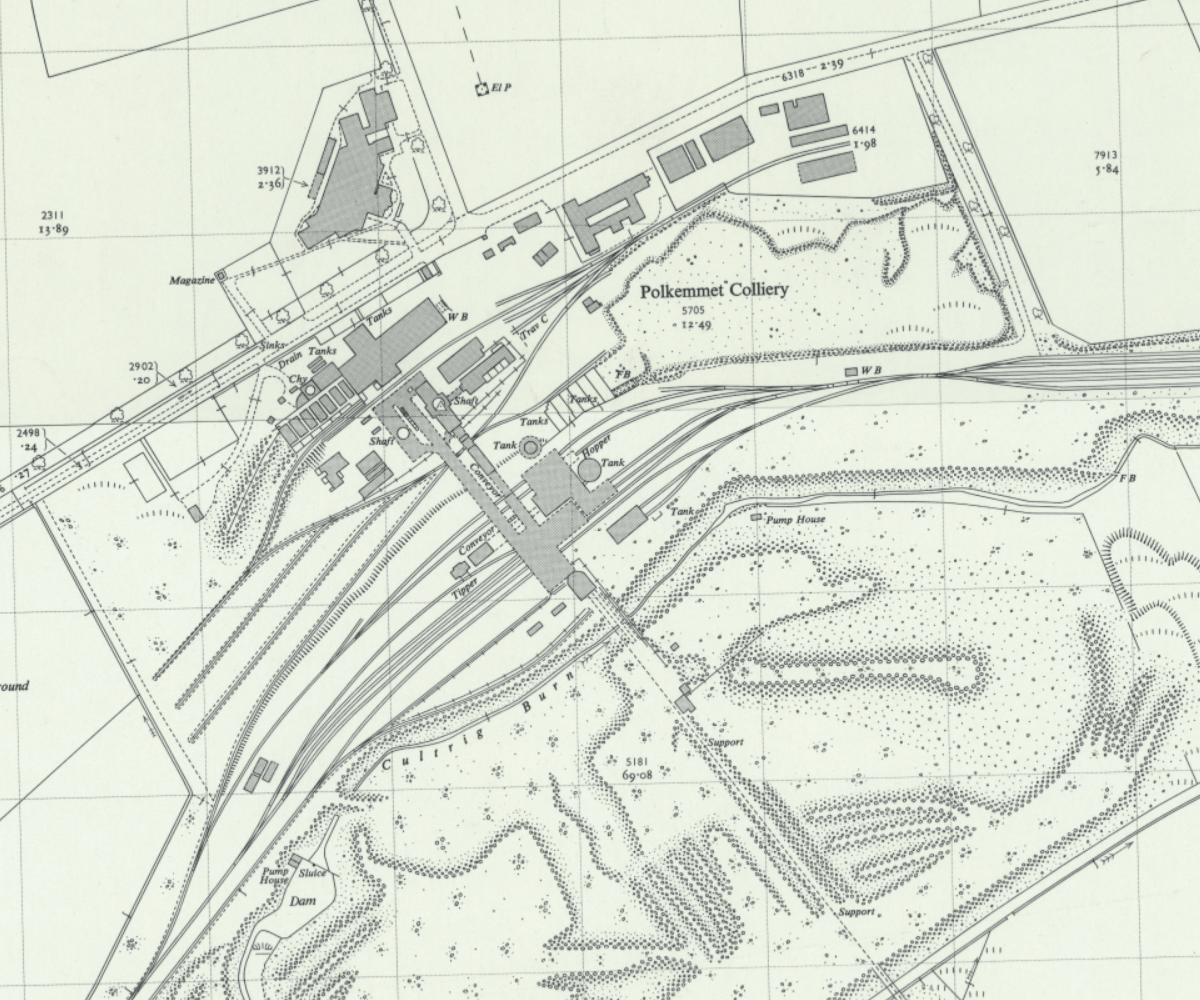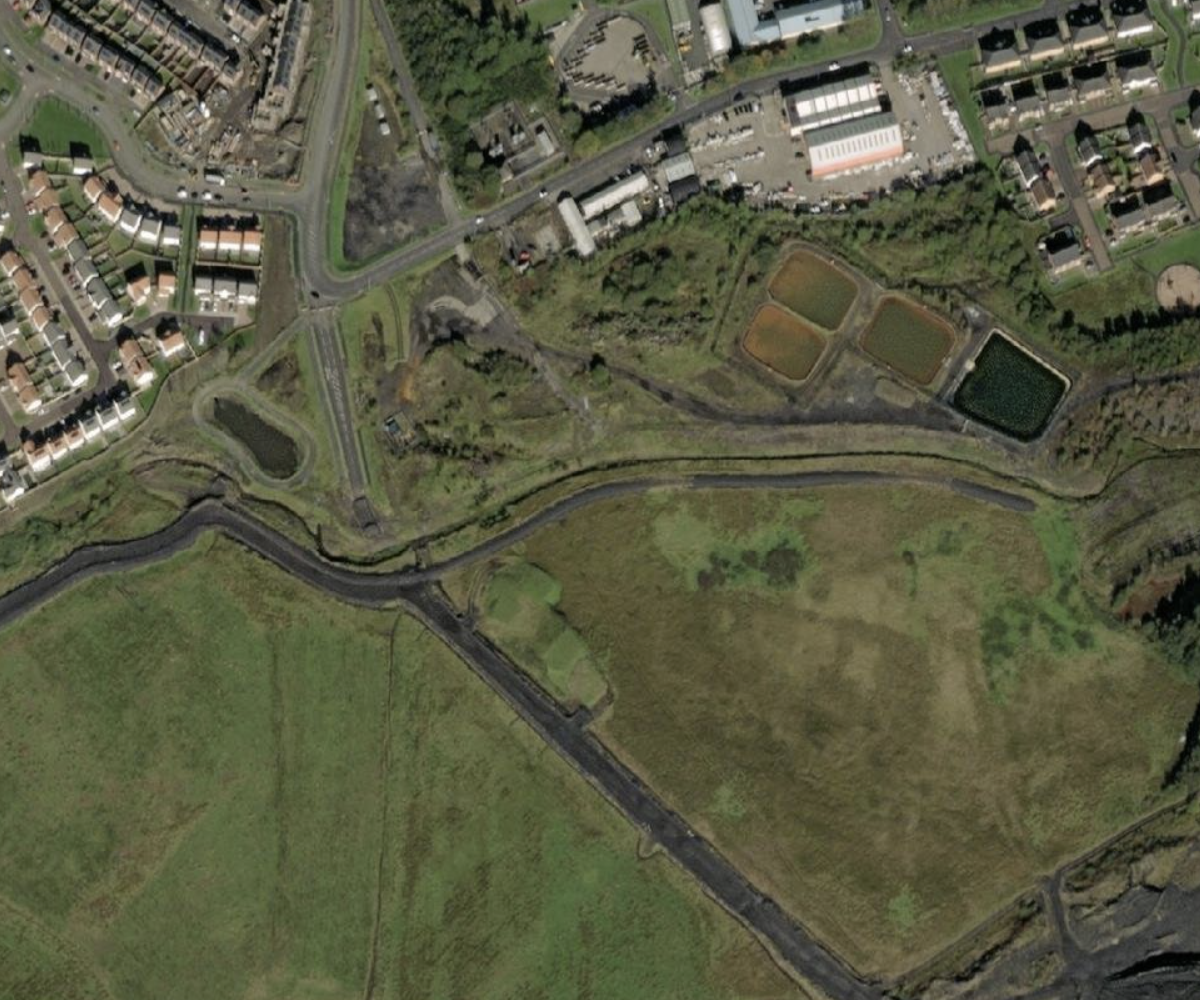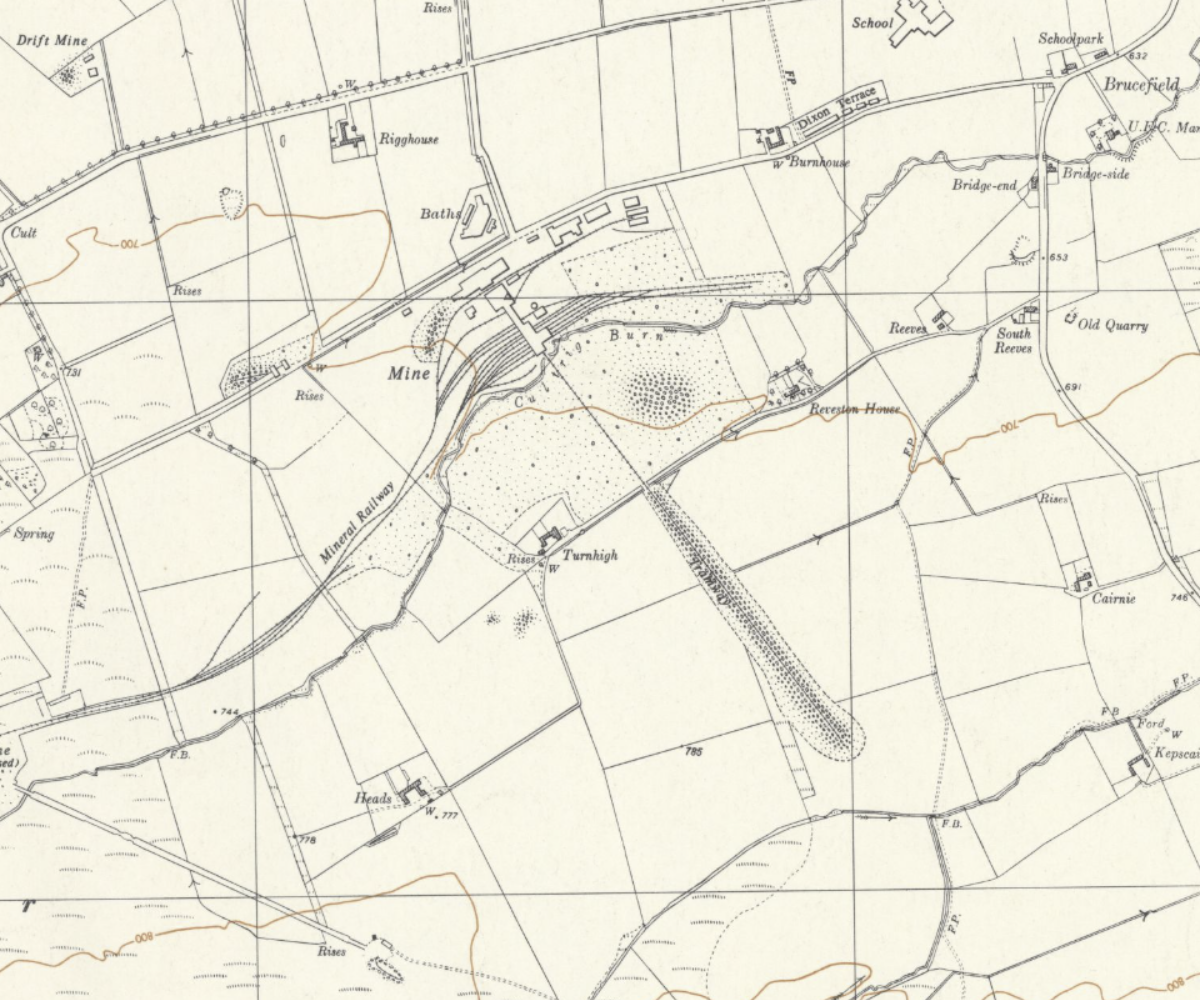- Badallan pit
- Badallan No.2 mine
- Balbardie - old pits
- Balbardie No.1 pit
- Balbardie No.2 pit
- Balbardie No.2 mine
- Balbardie No.4 pit
- Balbardie No.5 pit
- Ballencreiff fireclay mine
- Ballencrieff - early pits
- Barbauchlaw - early pits
- Barbauchlaw No.1 pit
- Barbauchlaw No.2 pit
- Barbauchlaw No.3 pit
- Barbauchlaw No.4 pit
- Barbauchlaw No.5 pit
- Barbauchlaw No.7 pit
- Barbauchlaw No.9 pit
- Barbauchlaw No.11 pit
- Barbauchlaw No.10 pit
- Barbauchlaw No.12 pit
- Barbauchlaw No.13 pit
- Barbauchlaw No.14 pit
- Barbauchlaw No.15 pit
- Barbauchlaw No.16 pit
- Barbauchlaw No.17 pit
- Barbauchlaw No.18 pit
- Barbauchlaw No.19 pit
- Barbauchlaw No.23 pit
- Barbauchlaw Fireclay and Coal Mine
- Bathgate - old pits
- Bathville No.1 pit
- Bathville No.3 pit
- Bathville No.4 pit
- Bathville No.5 pit
- Bathville unidentified pit 1
- Bathville unidentified pit 2
- Bathville unidentified pit 3
- Benhar (Addie) No.2 pit
- Benhar No.6 and No.14 pits
- Benhar Colliery
- Benhar No.18 pit
- Benhar No.19 pit
- Benhar No.21 pit
- Benhar No.3 pit
- Benhar No.5 pit
- Benhar - old pits
- Benhar unidentified pits
- Benthead No.1 mine
- Benthead unidentified pit 1
- Benthead unidentified pit 2
- Benthead unidentified pit 3
- Benthead unidentified pit 4
- Benthead unidentified pit 5
- Benthead unidentified pit 6
- Bents mine
- Birniehill mine
- Blackrigg No. 1 & 2
- Blackrigg No.3 pit
- Boghead No.1 pit
- Boghead No.2 pit
- Boghead No.3 pit
- Boghead No.4 pit
- Boghead No.5 pit
- Boghead No.6 pit
- Boghead No.8 pit
- Boghead No.9 pit
- Boghead No.10 pit
- Boghead No.11 pit
- Boghead No.12 pit
- Boghead No.14 pit
- Boghead No.15 pit
- Boghead No.25 mine
- Braehead No. 1 pit
- Braehead No.2 pit
- Bridgecastle - early pits
- Bridgehouse - old pits
- Bridgehouse pit
- Brucefield pit
- Camps pit
- Cappers No.1 pit
- Cappers No.2 pit
- Cappers No.3 pit
- Cappers No.4 pit ?
- Colinshiel No.1 pit
- Colinshiel No.2 pit
- Colinshiel No.3 pit
- Colinshiel No.4 pit
- Cowdenhill No.1 Pit
- Craigrigg pit
- Crofthead (Stonehead) No.1 pit
- Crofthead No.2 pit
- Crofthead No.3 pit
- Crofthead No.5 & 6 pit
- Crofthead No.7 pit
- Crofthead (Stonehead) No.7 pit
- Cult pit
- Cultrigg No.1 & No.2 pits
- Cultrigg No.3 pit
- Cultrigg No.4 pit
- Cuthill mines
- Drumcross pits
- Drum No.1 & 2 pits
- Dumback No.1 mine
- Dumback No.2 mine
- East Benhar No.2 mine
- Eastfield No.1 ironstone pit
- Eastfield No.3 ironstone pit
- Eastfield No.3 coal pit
- Eastfield No.4 ironstone pit
- Eastfield No.5 pit
- Eastfield No.6 pit
- Eastfield No.8 ironstone pit
- Eastfield Eagin pit
- Eastfield Engine pit
- Eastfield unidentified pit 1
- East Handaxwood fireclay mine
- Easton No.1 pit
- Eastrigg (Craigrigg) No.1 pit
- Eastrigg (Craigrigg) No.2 pit
- Eastrigg (Craigrigg) No.3 pit
- Fallahill No.3 pit
- Fallahill No.4 pit
- Fauldhouse No.1 pit
- Fauldhouse No.1 (Knowes) pit
- Fauldhouse No.5 pit
- Fauldhouse No.8 pit
- Fauldhouse No.9 pit
- Fauldhouse No.10 pit
- Fauldhouse No.11 pit
- Fauldhouse No.13 pit
- Foulshiels No.1 & No.2 pits
- Gormyre mine
- Goukstane pit
- Greenburn pit
- Greenrigg pit
- Handaxwood No.1 pit
- Handaxwood No.2 pit
- Handaxwood No.3 pit
- Handaxwood No.4 pit
- Handaxwood No.5 pit
- Handaxwood early pits
- Handaxwood unidentified pit 1
- Handaxwood unidentified pit 2
- Handaxwood unidentified pit 3
- Handaxwood unidentified pit 4
- Handaxwood unidentified pit 5
- Handaxwood unidentified pit 6
- Handaxwood unidentified pit 7
- Handaxwood unidentified pit 8
- Handaxwood unidentified pit 12
- Handaxwood unidentified pit 13
- Handaxwood unidentified pit 14
- Handaxwood unidentified pit 15
- Harburn limestone mine
- Harthill No.1 ironstone pit
- Hartrigg or Harthill No.3
- Hartrigg No. 4 & 5 pit
- Heads mine
- Heatherfield No.4 pit
- Heatherfield No.5 pit
- Heatherfield No.6 pit
- Heatherfield No.7 pit
- Hilderston Hill pit
- Hilderston - early pits
- Hopetoun No.2 pit
- Heatherfield No.3 pit
- Hopetoun No.8 pit
- Hopetoun No.9 pit
- Hopetoun No.10 pit
- Hopetoun No.11 pit
- Hopetoun No.12 & 13 pits
- Inchcross No.1 pit
- Inchcross No.2 pit
- Kipps - early pits
- Knowton No.1 & 2 pits
- Latchburn pit
- Leadloch No.1 pit
- Leadloch No.2 pit
- Levenseat No.1 limestone pit
- Levenseat No.2 pit
- Levenseat No.3 limestone pit
- Levenseat No.3 fireclay mine
- Levenseat No.4 fireclay mine
- Levenseat No.1 & 2 fireclay mine
- Levenseat High mine
- Levenseat No.1 limestone mine
- Levenseat quarry limestone mines
- Levenseat unidentified mine
- Loganlea No.1 pit
- Loganlea No.2 pit
- Longford pit
- Mosside No.1 Pit
- Mosside No.2 pit
- Mosside No.3 pit
- Mosside No.4 mine
- Muckraw mine
- Muirhousedyke pit (1)
- Muirhousedyke pit (2)
- Muldron No.6 pit
- Muldron No.7 pit
- Muldron No.8 pit
- Muldron No.9 pit
- Muldron unidentified pit 1
- Muldron unidentified pit 2
- Muldron unidentified pit 3
- Muldron unidentified pit 4
- Muldron unidentified pit 5
- Muldron unidentified pit 6
- Muldron unidentified pit 7
- Muldron unidentified pit 8
- Muldron unidentified pit 9
- Muldron unidentified pit 11
- Muldron unidentified pit 10
- Muldron unidentified pit 12
- Murieston Limestone Mine
- Murraysgate mine
- North Cobbinshaw coal mine
- Northrigg No.2 pit
- Northrigg No.7 pit
- Northrigg No.1 mine
- Northrigg No.2 mine
- Polkemmet No.5 pit
- Polkemmet No.6 pit
- Polkemmet No.8 pit
- Polkemmet No.9 pit
- Polkemmet Colliery
- Polkemmet No.3 pit
- Polkemmet unidentified pit 1
- Polkemmet unidentified pit 2
- Polkemmet unidentified pit 3
- Polkemmet unidentified pit 4
- Pottishaw No.1 & 2 mine
- Redhouse pit
- Riddochhill No.1 pit
- Riddochhill No.2 pit
- Riddochhill Almond Mines
- Snab pit
- South Broadrigg pit
- Southrigg No. 1 & 2 pits
- Southrigg No. 3 & 4 pits
- Southrigg No. 7 & 8 pits
- Standhill No.1 pit
- Standhill No.2 pit
- Starryshaw No.1 & 2 pits
- Stonehead mine
- Stonehead No.1 pit
- Stonehead No.2 pit
- Stoneheap limestone pit
- Stoneyburn No.1 pit
- Stoneyburn No.2 pit
- Tippethill No.1 & 2 mine
- Torbane No.1 pit
- Torbane No.2 pit
- Torbane No.3 pit
- Torbanehill No.1 pit
- Torbanehill No.2 pit
- Torbanehill No.3 pit
- Torbanehill No.4 pit
- Torbanehill No.5 pit
- Torbanehill No.6 pit
- Torbanehill No.7 pit
- Torbanehill No.8 pit
- Torbanehill No. 9 pit
- Torbanehill No.10 pit
- Torbanehill No.11 pit
- Torbanehill No.12 pit
- Torbanehill No.13 pit
- Torbanehill No.14 pit
- Torbanehill No.15 pit
- Torbanehill No.16 pit
- Torbanehill No.17 pit
- Torbanehill No.18 pit
- Torbanehill No.19 pit
- Torbanehill No.20 pit
- Torbanehill No.21 pit
- Torbanehill No.24 pit
- Torbanehill No.26 pit
- Torbanehill No.29 pit
- Torbanehill Garden Pit
- Trees No.1 pit
- Trees No.2 pit
- Trees No.3 pit
- Wallhouse No.1 mine
- Westallan pit
- Westfield No.1 pit
- Westrigg No.1 pit
- Westrigg No. 2 & 3 pit
- Whitrigg No. 1 & 2 pits
- Whitrigg No. 4 Burnbrae mine
- Whitrigg No. 5 pit
- Whitrigg No.8 & 9 mine
- Woodbank Mine
- Woodend No.1 pit
- Woodend No.2 pit
- Woodend No.3 pit
- Woodend No.4 pit
- Woodend No.5 pit
- Woodmuir No.1 pit
- Woodmuir No.2 pit
- Woodmuir No.3 pit
- Woodmuir No.4 pit
- Woodmuir - early pits (south)
- Woodmuir - early pits (north)
Polkemmet Colliery

1:2500 OS map c.1956, courtesy National Library of Scotland

aerial view

6" OS map c.1950, courtesy National Library of Scotland
THE NEW PIT. A further stage has been reached in the operations in connection with the new pit near Whitburn. The two pithead framed have now been erected at the shanks, the work having been pushed rapidly ahead, to allow of the men getting away to transact some Government work of an imperative nature. It is expected that the staff of workmen will be away a good time. and afterwards they will return to complete this job. On the Sundays quite a number of the townspeople visit the scene of the new pit, and they are generally much impressed with the magnitude of the operations.
West Lothian Courier, 17th September 1915
.......
BAD NEWS FOR WHITBURN —Every day for the past week one has expected to hear of the coal being reached in the No 1 pit of Messrs Dixon’s Polkemmet Colliery, locally known as “the Dardanelles.” The coal was reached on Monday, but with the reaching of the coal there came rush of water which the pumping apparatus was unable to cope with, the flow being calculated 60.000 gallons hour. Water was soon well up the shaft, and in view of this the sinkers have been paid off to the number of over 40. It will some little time before the water can be coped with, and should it not soon spend itself, it will an expensive item to handle. With the reaching of the coal, the company had in view the building of a large number of houses, but this will delay matters somewhat, and retard developing the seam that to employ many men.
West Lothian Courier, 2nd December 1921
.......
GOOD. NEWS FOR WEST LOTHIAN MINERS. Coal Reached in New Pit. At Polkemmet Colliery, Whitburn, where pit-sinking operations have been going on over an extended period, it is announced that the shafts, which are 262 fathoms deep, have now reached coal, and opening operations are proceeding. The seam is stated to be of good quality and height, and the workings are being developed with the aid of percussive coal cutters. All the latest types of winding and power plants, as well as workshops, have already been installed on the surface. When fully developed the colliery is estimated to give work to 1000 men and produce 2000 tons of coal daily. A start has been made with the erection of surface-clearing plant.
Sunday Post, 1st October 1922
.......
MINING STUDENTS’ VISIT TO NEW COLLIERY.—On Wednesday of last week, the mining students of the district paid a visit to Messrs William Dixon, Ltd.’s new colliery on Polkemmet estate, known locally as “Ihe Dardanelles, *’ which consists two pits 324 yards deep. and situated at the sonth-western outskirts Whitburn. Arrangements had been made with the management for the visit, and the party was conducted over the colliery and had everything explained to them by Mr M'Call, the manager. Sinking operations had just commenced when the Great War broke out, hence the reason for the name given to the colliery locally. Rapid progress was being made with the sinking when the demands of the war called for a halt, and nothing was done until hostilities had ceased. The two shafts are close to one another, and are of the round pattern, heavily bricked from top to bottom, and supported by steel and measuring 21 feet in diameter. Before reaching the Witsontown Main coal scam, which is now being developed, a water vein was struck which delayed operations for some time, but this has now considerably spent itself. Powerful engines have been erected for winding purposes for both pits, and the latest in screening plant is in course of erection by Messrs Dickson and Mann, Ltd., Bathville Engineering Works, and everything being electrically lit. Three shifts of miners are at present employed driving mines to open the seam of coal, which runs about five fect thick, and when the workings are opened up, it is expected that the colliery will employ about 1000 men and produce about 2000 tons of coal per day.
Linlithgowshire Gazette, 6th October 1922

